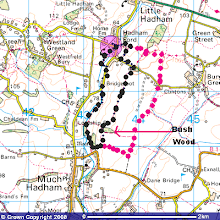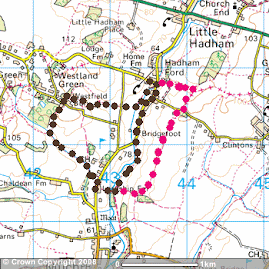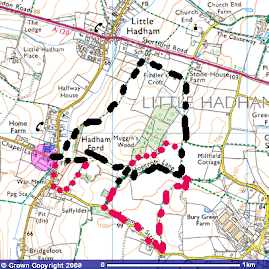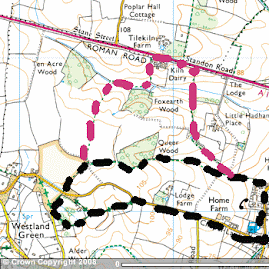A three day trip to Tavira in Portugal, leaving Stansted on the evening of the 5th, returning 8.00pm on the 8th April. After landing at Faro and a night in a local hostel, I made my way by bus and train to Tavira, a 35 minute train journey east from Faro. Accomodation was quickly sorted and I was off on to the local salt pans (Salinas) where the bird numbers were staggering. Black winged stilts were everywhere along with huge numbers of dunlin. Mixed in with these were little stints, grey plovers, occasional redshank and greenshank and curlew sandpipers. Hoopoes (3) and 1 woodchat shrike were superb birds to see along with white stork. Sardinian warblers and zitting cisticolas appeared to populate most shribs whilst crested and thekla larks were on the sandy paths. Kentish plovers ran over the dry salt pans along with sanderlings, ringed plover and yellow wagtails (sub species iberiae). By the time I returned to my digs I had recorded over 45 species, considering the fact I was in one very specialised habitat I was most pleased. This list was extended when I took into consideration a lesser kestrel seen at Faro train station, swifts, house martins, swallows and several red rumped swallows.
The following morning I took the 4 mile walk to the ferry to visit Ilha da Tavira. En route the first flamingoes were recorded, along with a single wood sandpiper and spotted redshank. Both godwit species were seen beofre a short ferry tripo to the island. In the conifer trees, in increasing heat (30C+) were so many birds. Serins and goldfinches were everywhere as well as house sparrows, magpies and collared doves. After several glimpses of willow warbler, chiffchaff, whitethroat and bonellis warbler I entered an arid area. Here a eurasian wheatear and another woodchat shrike were observed and photographed. However, the highlight was flushing 3 stone curlews, one of which flew off near enough to get a record shot. The heat haze was making long distance photography very tricky, and at times virtually impossible. A short sea watch produced nothing but lesser balck backed and yellow legged guls, plus 3 little terns and 1 common tern. The heat eventually drove me to the shade of the conifers where I concentrated on improving my shots of woodchat shrike and serin. The last day dawned and I was out early to try and beat the haze. A distant spoonbill was witnessed along with 4 little egrets. It was clear that there had been a large fall of birds as there were now 100's of avocets and even more black winged stilts. 2 whimbrels moved off noisily from one salt pan and a red rumped swallow shot past me, too fast for a photo. Bee eaters called from all directions but were very jumpy and consequently hard to get near for a photo. A train and bus trip eventually deposited me at Faro airport for my 17.10 flight home. A superb trip and one that I wish to repeat at another time of the year.
photos, from top:
- bee eater
- bee eater
- beach at Ilha da Tavira
- black winged stilt and redshank
- woodchat shrike
- aerial view Tavira
- dunlin in 2 plumages
- woodchat shrike
- turnstone
- Tavira at night
- stone curlew
- spoonbill (distant!)
- serin
- sardinian warbler
- sanderling
- painted lady
- little stint
- kentish plover
- kentish plover
- grey plover and dunlin
- grey heron
- crested lark
- black winged stilt in flight
- black winged stilt, sanderling and turnstone
- curlew sandpipers and dunlin
- clouded yellow
- cormorant
- dunlin
- black tailed godwit and dunlin
- black winged stilt
- yellow wagtail
- white stork
- white stork















































































